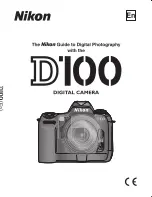
V1.02
Thom Hogan’s Complete Guide to the Nikon D300
Page 82
When the exposure is complete and a signal is received by
the sensor from the camera’s main electronics, these electrons
are moved through column-parallel analog-to-digital
converters on the sensor, which includes a series of gain and
noise suppression techniques, before it reaches the external
circuitry (the stuff Nikon calls EXPEED; see next). These
converters have a relatively simple job, which is to count the
number of electrons they see from each photosite and convert
that into 12-bit or 14-bit digital values that are then passed on
to the rest of the camera’s circuitry.
Tip:
For a fuller discussion of how sensors work, see
http://www.bythom.com/ccds.htm
.
EXPEED
As part of the D300 (and D3) introduction, Nikon finally got
around to giving a name to the digital imaging system internal
to their cameras.
On a digital camera, there are a handful of digital parts that
are involved in the imaging. First, we have the imaging sensor
(see “The D300 Sensor” on page <48>). Either the sensor has
on-board ADC (analog-to-digital conversion) or external ADC.
(The D300 has an on-board ADC.) From there the image data
goes to a memory buffer where it is looked at by a custom
ASIC chip that handles interpreting the data. After processing,
the data ends up back in the memory buffer (where the
imaging ASIC may continue to work with it). Finally, when
the memory buffer contains a finished image file, that file is
moved to the camera’s storage card.
















































